Previous Concepts to Innovation Projects
This page illustrates several examples of projects from previous years. Our project topics cover diverse areas within electrical and computer engineering including sensing systems, IoT, signal and image processing, AI/ML, control systems, VLSI, power and energy systems, photonics, and semiconductors devices and manufacturing. Purdue faculty and our industrial partners provide a comprehensive coverage of all topics within the ECE. Project topics are updated each year and include problems suggested by the faculty and industrial partners.
Parametric Test Pattern Design and Fabrication
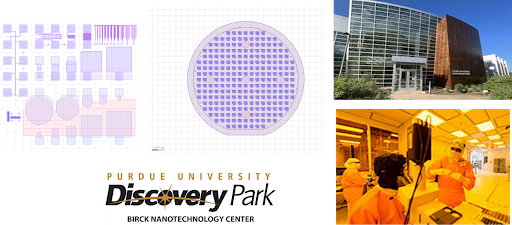
A design of standard test structures implemented on a set of wafers that aim to enable consistent measurement and testing of semiconductor manufacturing processes. The list of test patterns includes evaluating key parameters such as dielectric constant, CV measurements, line widths, etch selectivity, and film deposition uniformity. The layout of test patterns is done using CAD techniques and fabricated with direct write files and photomasks. The wafers allow the collection of critical parametric data that will be used for statistical process control and performance analysis.
Low Power ADC for Neural Interfaces

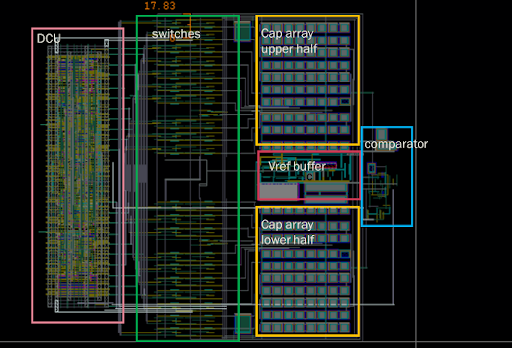
Existing implantable neural recorders for small‐animal research struggle to reconcile the conflicting requirements of high‐fidelity data capture and ultra‐low power consumption under a battery‐free, RF‐harvested supply. Commercial systems either rely on bulky batteries or wired connections that hinder free behavior, or they use on‐chip ADCs that draw tens to hundreds of microwatts—far exceeding the ~100 μW budget available from RF energy harvesting. As a result, achieving a single‐chip, fully wireless neural recorder with ≥10-bit resolution and ≥20 kS/s sampling per channel while staying below 10 μW per channel remains an open challenge. A number of recent SAR ADCs target ultra-low-power operation for biomedical applications, but each makes its own trade-offs among resolution, speed, and power consumption. In this project, we designed a new ADC that delivers a full 10 bit at 20 kS/s in 180 nm node—while consuming just 19uW from a 1.8V supply. This more than halves the power of existing designs without sacrificing speed, resolution, or dynamic range, making it uniquely well-suited to RF-powered, implantable neural recording systems.
mm-Wave Radar for Seat Occupancy Detection
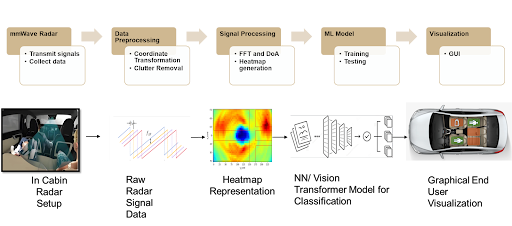
Recent improvements in safety and automation for vehicles call for advanced safety and comfort features such as seatbelt detection, dynamic collision avoidance, child detection, and dynamic air conditioning. This produces a need for a platform to integrate all the above features without complicating the overall system. Currently, there are three main existing solutions on the market. Pressure/weight sensors, which are currently used in almost all vehicles for seatbelt detection, cameras, and infrared (IR) sensors. All 3 of these solutions have their own pros and cons. Pressure sensors do not have the ability to detect the difference between a human and a heavy object, thus requiring another instrument to implement features such as dynamic collision avoidance, child detection, and dynamic air conditioning. Cameras have privacy issues and don’t work reliably in certain lighting conditions. This project uses mmWave radar technology to detect occupancy and differentiate between human and inanimate objects.
Microcontroller Power Management
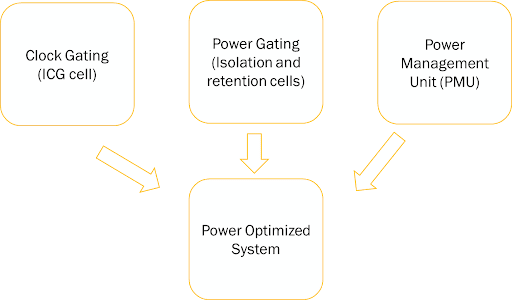
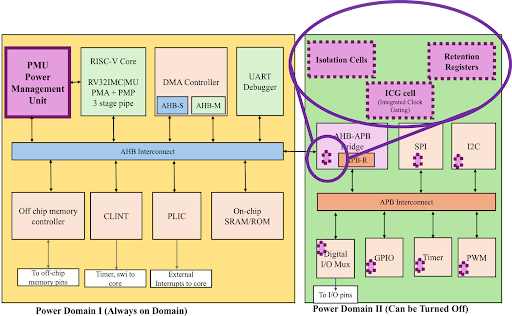
AFTx07 is a general-purpose microcontroller that can be used in a variety of event driven applications and embedded systems. The current version of AFTx07 consumes more energy when operating because it lacks integrated power management mechanisms, despite its functional capabilities. Its applicability for power-sensitive applications, like battery-operated systems, IoT devices, and portable electronics, may be limited by this extreme energy dissipation. In the context of technology scaling in Moore’s Law, relying on smaller process nodes alone is no longer sufficient to achieve significant power reductions. Modern SoC designs must incorporate explicit power optimization strategies to meet the growing demand for energy efficiency. Without such enhancements, devices risk overheating, shortened battery life and overall reduced competitiveness in the embedded market. In this project, aggressive power management techniques such as power and clock gating were deployed to improve power efficiency in AFTx SoCs. These steps are necessary to guarantee that the SoC satisfies the efficiency and performance standards of next-generation embedded systems.
